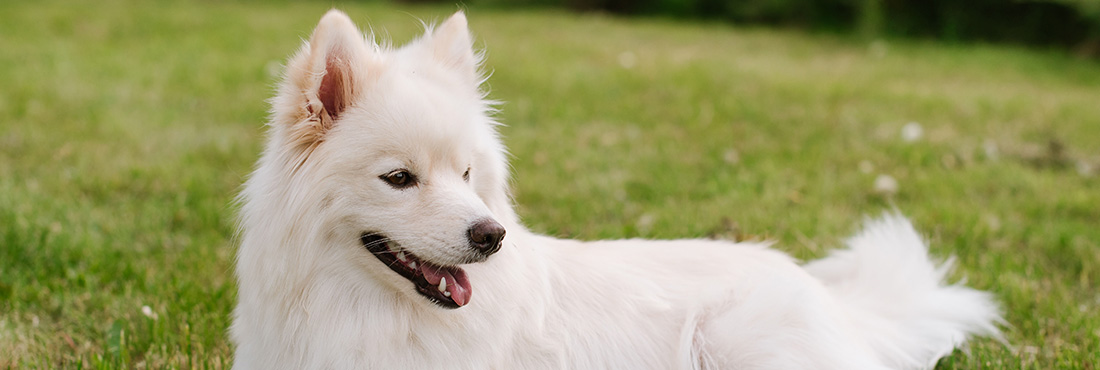They’re adorable, silly, and perfectly suited for small-space living such as bachelor’s pads and apartments. Mixing the playfulness, extroverted, sociability, and highly active lifestyle of the Pomeranian with the outgoing, friendly, and super-alert nature of the Siberian Husky is surely going to result in a highly rambunctious hound that will never stop craving your attention. It’s their playful antics and adorable looks that will surely win the crowd. Sadly, first-time pet parents often base their decision on the designer breed’s cute looks rather than paying attention to its temperament. Most often find themselves overwhelmed and fully unprepared to meet the needs of these designer breeds. Regrettably, for these Pomskies, many end up in rescue organizations or even shelters.
Before you decide to buy a Pomeranian Siberian Husky designer breed dog, make sure you understand its unique characteristics and requirements for optimum care. If you cannot commit to these basic requirements, then a Pomsky is not for you. This article should help you make that decision.
History of the Pomsky
The Pomsky, or Huskeranian to some, is a relatively new designer breed, barely a decade old, having been ‘designed’ in 2009 in the US through artificial insemination. However, it would take another 3 years before the first Pomsky litter was born in 2012, also in the US. Artificial insemination was the most viable approach to designing a breed. More specifically, it must be the bigger Siberian Husky that needs to get pregnant, not the smaller Pomeranian.
When species breed, both parents contribute half of their genes to forming the new cell, which will soon form and develop into offspring. And since the genes contain all the information about how a certain species is to develop, breeding means you’ve got 50% of the characteristics of female Siberian Husky and 50% of the characteristics of the male Pomeranian. Unfortunately, there is no telling what genetic information is contained in this 50/50 arrangement and how it will translate into the offspring.
That being said, it is a must that the Siberian Husky be the mother and the Pomeranian be the father because of the sheer difference in size. Having it the other way around may result in larger puppies for which the smaller Pomeranian’s reproductive organs may be unable to accommodate. This can endanger the puppies or, worse, even the Pomeranian mother.
The Pomsky Club of America was formed to produce a recognized purebred. However, it will take many more years to accomplish this because of the large disparity between the two breeds. Puppies must be carefully selected for the specific traits that Pomsky breeders need. A breed can only be called pure if the characteristics or traits of the offspring are nearly uniform and they can already follow a very predictable pattern. It would take several generations before these traits are cemented into a purebred form. The good news is that the Siberian Husky and the Pomeranian have the same roots, belonging to the Spitz type of dogs.
There are also ethical concerns in using artificial insemination since it is generally not considered natural. This leads to a dog that is, to put it bluntly, made by man and not by the natural processes of reproduction.
Regardless, the Pomsky is being groomed as a leading contender for many companion dogs, such as the mini Poodle and the Yorkshire Terrier. It just might be based on its growing popularity in the US and Europe. For now, however, Pomsky breeders must be very careful in selecting the best possible puppies for breeding. That means they have to look deep into the lineage of both parents.
Who are the Parents?
Since a Huskeranian or Pomsky has a Siberian Husky for its mother and a Pomeranian for its father, it is important to understand the unique characteristics of these parent breeds.
Siberian Husky
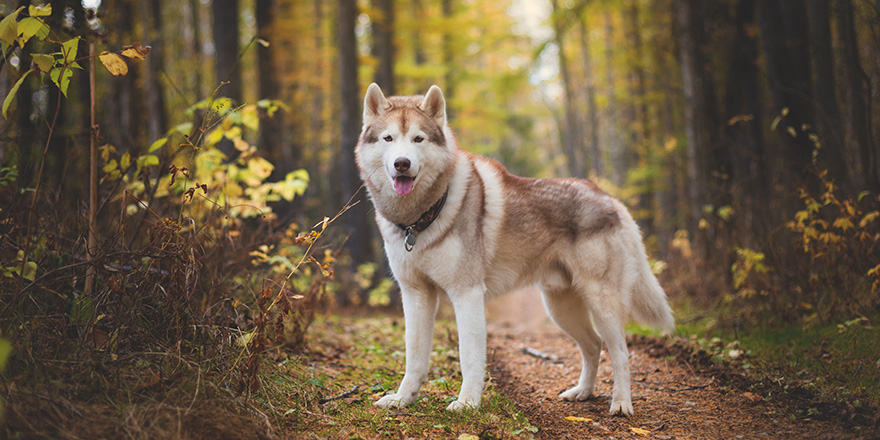
The breed has been around for millennia, possibly as ancient as some 8,500 years ago. They were first bred by the Chukchi peoples who inhabited the harsh lands of the Chukchi Peninsula, washed by the frigid waters of the Bering Sea. The Chukchis are Paleo-Siberian inhabitants of the ancient world. They have been using the Husky to help carry their goods across the inhospitable Siberian tundra, where the summers are very short. Even on these short days when the sun is shining, the landscape can still be formidable. This is where Huskies are valued. It’s highly resilient and very active. It loves pulling sleds loaded with the Chukchi’s goods.
During the Nome Gold Rush at the turn of the 20th century, Russian traders eventually introduced these dogs as sled dogs. Carrying gold recovered from the beach sands of Nome, Alaska, the Siberian Huskies were called by the local people Siberian Rats because they were smaller than the heavyweight dog in the area, the Alaskan Malamute. Nevertheless, because of their smaller size, they were faster, more agile, and more resilient than their bigger counterparts earning them a slot in many of the region’s sled dog racing competitions.
The Siberian Husky shares many genetic characteristics with other Artic dogs, such as the Alaskan Malamute, the Alaskan Husky, and the Chukotka sled dog. It is believed to be the direct descendant of the North Asian Taymyr wolf, a subspecies of the grey wolf. Most scholars believe that dogs began splitting from their wolf ancestors some 11 to 16 millennia ago. However, recent studies show that the genetic split (a term for mutation) may have occurred much earlier, about 20,000 to 25,000 years ago. This is significant since more than a quarter (27%) of the genetic makeup of Siberian huskies and other Northern dog breeds can be traced back to the ancient population of Siberian wolves.
Siberian Huskies can grow up to 50 and 60 pounds for females and males, respectively, and typically last from 13 to 14 years. It’s a working dog that loves the outdoors, plenty of exercises, and socialization with other dogs, kids, and other people. It’s a highly intelligent breed, but they have a streak of stubbornness that can make first-time owners give up their obedience training. They are the quintessential leader of the pack, requiring a stronger, more willful pet parent to show them who’s the leader. After all, they are the direct descendants of a special grey wolf breed, which can still manifest in their sense of independence.
The Husky is one of the sturdiest breeds in the dog world. Its main problems are issues with its eyes and hip dysplasia. Its hardiness is believed to be what the Husky has inherited from the Taymyr wolf.
Pomeranian
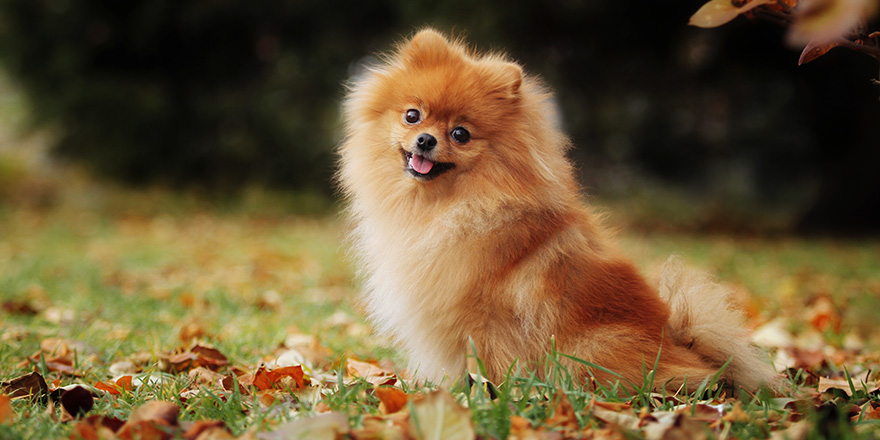
Bubbly, cute, and affectionate, the Pomeranian is a direct descendant of the large working dogs that toiled the inhospitable climes of the Arctic. Migration to Middle Europe introduced some of these Arctic dogs in the region where they were aptly called Wolfspitz because of their sharp, pointed muzzles and ears. A region in present-day Germany and Poland is known as Pomerania is credited with the miniaturization of the Wolfspitz, paving the way to what the world now knows as Pomeranian.
Not much is known about the breed until the 18th century, when Queen Charlotte brought two of the dogs to England in 1767. The Poms, Phoebe, and Mercury were larger than modern-day Pomeranians highlighting the breed’s ongoing transition from their wolf-like ancestors into the miniature lap dogs we know today. In 1888, Queen Charlotte’s granddaughter, Queen Victoria, established a breeding kennel of her own, with Poms being her favorite. One of the most successful and largely considered progenitors of modern Poms is Windsor’s Marco weighing only 12 pounds.
Because of the unexpected popularity of the small wolfish hound, Queen Victoria strived to make the breed even smaller. Today, a standard Pomeranian can weigh anywhere from 3 to 7 pounds, although it’s not unusual that some will grow bigger to Queen Victoria standards. It also grows to 8 to 12 inches in height at the shoulder and can last at least 15 years.
Number 15 in AKC’s list of the most popular breeds, the Pomeranian is a favorite among the members of society’s upper echelons, including the royalty that included England’s King George IV and Josephine de Beauharnais. By 1898, a Pom was already a member of the AKC until its official recognition two years later.
Spunky and bright-eyed with the endless curiosity of a toddler and the adventurism of a preschooler, the Pomeranian exudes confidence for its diminutive size. It is always happy, highly adaptable, and very clever, a trait it inherited from its wolf ancestors. It loves the attention, whether performing a one-off show for the family or competing in a serious agility course. Those nimble feet and its wide-eyed innocence make the Pom a great little hound to have.
But this tiny bundle of joy does have quite some serious health issues. Tracheal collapse, dental problems, luxating patellas, Legg-Calve-Perthes disease, progressive retinal atrophy, and skin and coat problems are just some of the major health concerns of a Pom.
There are several things in common between the Pomeranian and the Siberian Husky. They both belong to the Spitz class of dogs, having pointed ears and muzzles, a thick coat, and a tail that either curl back or droops. They’re friendly, intelligent, and energetic, too.
Quick Facts
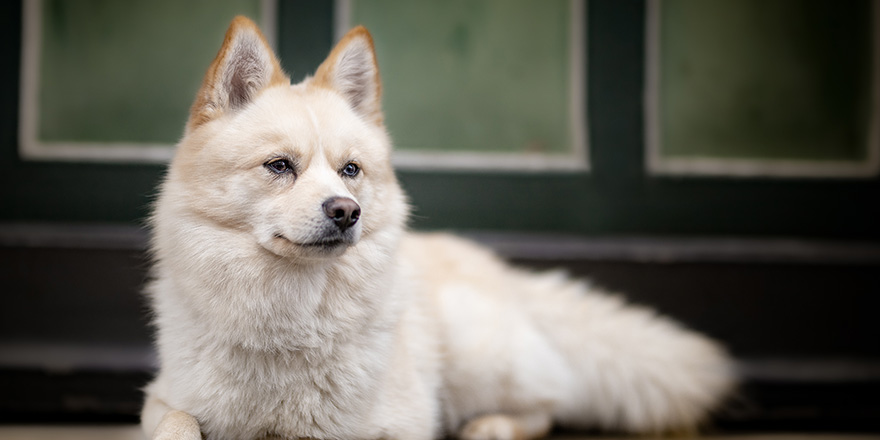
It is difficult to establish the breed qualities of a Pomeranian Siberian Husky Mix since they have only been around for less than a decade. We really couldn’t establish with absolute certainty their lifespan as well as any other information that might prove useful when deciding to get a Pomsky or a Huskeranian. We will share the facts with you based on the best available data. As such, these may change with the addition of new information.
- Pomskies may weigh up to 15 pounds, although it is highly likely they can weigh no more than 10 pounds or as heavy as 38 pounds, depending on whose trait for weight is stronger between the Pom and the Husky. If it’s the Pom, expect the body weight to be on the lighter side; if the Husky, it is more on the heavier side.
- They may live up to 15 years, maybe more, although the minimum should be 12 years. This is quite difficult to establish since the first Pomsky came into being only in 2012.
- The Huskeranian can grow up to 15 inches, possibly more. Again it all depends on whose trait for height is more dominant.
- A Pomsky is like Forest Gump’s box of chocolates: you’ll never know what you will get. This is true for hybrids since there is no sure way to determine which trait of each parent will be present in the offspring and whether these will be dominant or recessive. In other words, be prepared to face whatever challenges Pomsky can bring.
- Siberian Huskies are sturdy; Pomeranians are not. Combining the two makes it natural to think that one offsets the other. Sadly, this is not always the case. Again, it’s all about whose genes will be more dominant. If your Pomsky happens to inherit the hardiness of the Husky mother, then the only issues it may inherit are some eye problems and hip dysplasia. But if the Pomeranian father is more dominant, expect health issues to be plentiful.
- The Pom is a one-person hound, while the Husky has a more independent streak. Mixing these two traits can be quite a challenge.
Things You Should Know
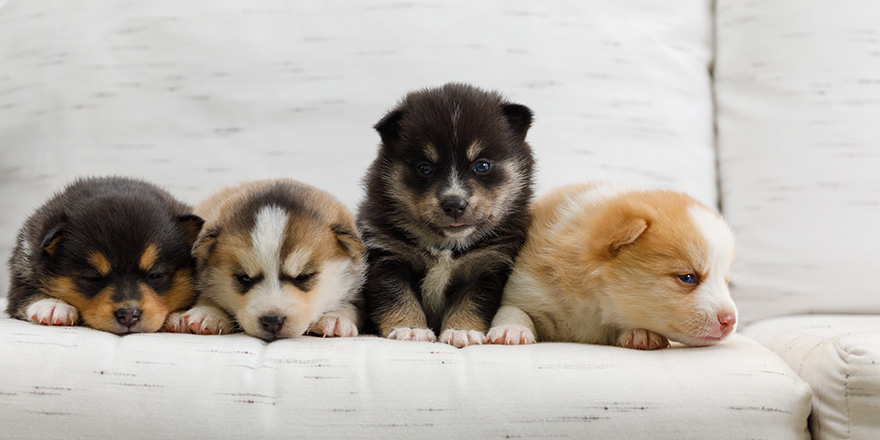
If you’re halfway into your decision to get a Pomeranian Siberian Husky mix, it is important to take note of the following things.
Training
Both Husky and Pom are intelligent breeds, so it is expected that their offspring, the Pomsky, will be intelligent, too. Unfortunately, this does not automatically translate to easy trainability. The Husky’s sense of independence is strong and will never bow down to a self-conscious pet owner who lacks the confidence to be the pack’s leader. It will bully you since the Husky is bred in the harshest environments where the weak have no place. The Pom, on the other hand, is very playful in that it treats almost everything as a game.
Training should begin in earnest the moment your Pomsky pup arrives home. You’ve got to be its leader and not the other way around. Like all pets, positive reinforcement and knowing the essentials of training can go a long way.
Feeding
Depending on the size and activity level of your Pomsky, you can either increase or decrease its calorie intake. Both breeds are highly active dogs, so they need calories to sustain their energy levels. More importantly, however, are proteins as they need to build and develop their muscles. Always strive for high-quality dog diets. If you can give them high-quality raw food, then so much better.
Exercise
Being highly active dogs in their respective breeds, the Pomsky will require moderate levels of physical activity. Thirty to 60 minutes of casual walking daily should be fine for a Pomsky. If more Siberian Husky is in the mix, you’ve got to ramp up the exercises. Running, hiking with your dog, and jogging should be fun. But if there is more Pom in your Huskeranian, 30 minutes of intense playtime in the backyard should suffice.
Mental stimulation is also important. Being intelligent as they are, they need interactive or puzzle games to keep them sharp and keep away from canine boredom. Both can have destructive tendencies, which can be mitigated by keeping your Pomsky relaxed and focused.
Socialization
Poms love the attention that they get. They’re one of the world’s quintessential lap dogs or companion dogs. Royalties, socialites, and celebrities love bringing them into their affairs, dressing them in fancy clothes and adorned with lavish accessories. Huskies don’t mind the attention, but they love hanging out with their family’s kids.
This can be tricky since we cannot determine which trait will emerge as dominant. Regardless, early socialization can help establish the foundation for a socially-friendly Pomsky. You may want to enroll it in a puppy class or even be brought to the dog park where it can socialize with other dogs. Having people in your home helps.
Grooming
Daily brushing is a must for your Pomsky; that is, if you want to retain the health of its soft double coat. Otherwise, tangles and mats can develop a lot faster than their parents. Huskeranians are also heavy shedders, so get ready with the de-shedding tool. Weekly bathing is also recommended, although once-monthly bathing should be fine if your Pomsky happens to be ‘well-behaved’.
Health
Since the hybrid is relatively new, we have a dearth of information about what health issues a Huskeranian may face. Scientists think there could be a mix of the various health issues the two parent breeds typically face.
A Husky’s main problems are issues of the eyes and hip dysplasia. A Pomeranian’s health concerns are more numerous, sad to say. These include collapsing trachea, patellar luxation, Legg-Carve-Perthes disease, cataract, progressive retinal atrophy, elephant skin, genetic alopecia, patent ductus arteriosus, growth hormone abnormalities, and thyroid disease, among others.
Even if you do manage to trace the lineage of your Pomsky, there’s still no telling whether these diseases will manifest or not.
The Pomsky is perfect for individuals who:
- Can devote at least 30 minutes of exercise and engaging play time every day
- Knows the basics of canine obedience training and has the perseverance to follow-through
- Has all the right qualities of a pack leader
- Can accept full responsibility for however the Pomsky will turn out to be
- Doesn’t mind increased vocalization
The Huskeranian is not for individuals who:
- Don’t like cleaning up pet hair from their furnishings and other surfaces
- Don’t have time for training, socialization, playtime, and exercise
- Don’t like visiting the vet on a more frequent basis because of the uncertainty of health issues
- Don’t like dogs that either howl or bark excessively
- Doesn’t like the idea of having a dog that he doesn’t have any idea what it will turn out to be
Temperament
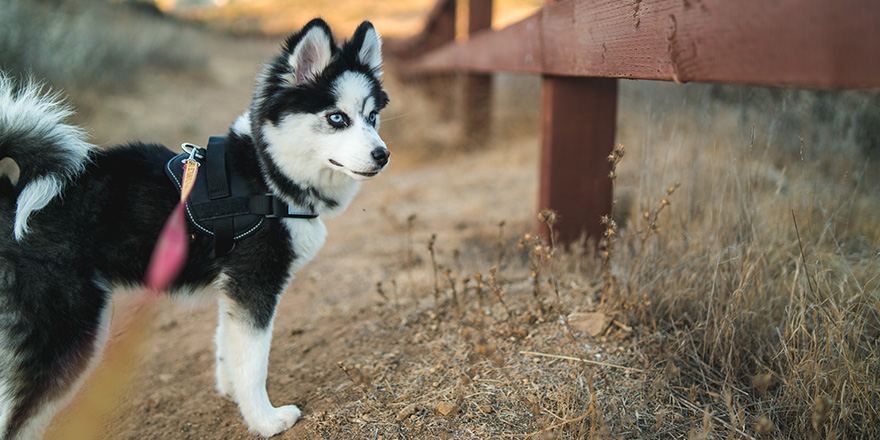
Pomskies are sweet, bordering on clownish. They love the attention and have this rather conceited belief that they’re the cutest 4-legged creatures on the planet. They’re quite vocal, too. Try combining the wolf-like howl of a Husky with the barking proficiency of a Pom, and you’ve got a really loud mix.
Pomskies that are socialized early on tend to be great with kids and other pets. The Husky has a strong prey drive, so you can expect your Pomsky to chase your household cat. Depending on the size of the Pomsky, kids younger than six should never be allowed to pet the dog, as young kids still don’t know how to properly handle these small hounds.
The temperament of a Pomsky largely depends on how you nurture it and the socialization it has received so far in its life. Early socialization and obedience training are absolute musts for these dogs, especially since they’re relatively new and little are known about their temperaments as a hybrid. Most of the things we know are speculations based on our understanding of their parents.
The Pomeranian Siberian Husky Mix is a new hybrid that promises to deliver all the fine qualities of a large wolf-like working dog with the cute and lovable attributes of a toy lap dog. Only time can tell whether or not this will become a purebred in its own right.

